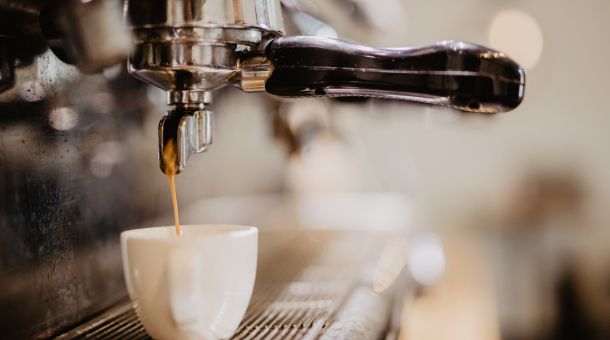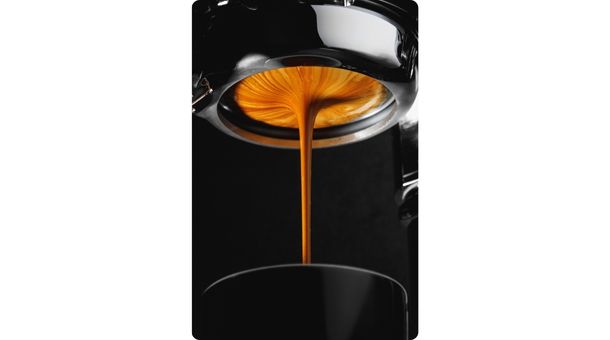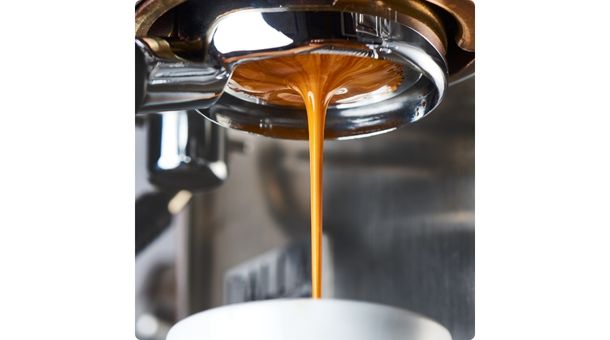How To Make an Espresso?
Creating a perfect espresso is an art and science that requires careful attention to detail. From selecting the right coffee beans to mastering the brewing process, every step matters.
In this comprehensive guide, we’ll walk you through the steps to make an espresso that’s rich, aromatic, and bursting with flavour. To start, you’ll need some essential supplies and tools.
Supplies:
- Fresh Roasted Coffee: The foundation of any good espresso is the coffee itself. Choose high-quality, freshly roasted coffee beans. Look for a roast profile that’s suitable for espresso, typically labelled as “espresso roast” or “medium-dark roast.”
- Filtered Water: Use filtered water to ensure that impurities and minerals don’t affect the taste of your espresso. The water temperature should be around 195°F to 205°F (90°C to 96°C).
Tools:
- Pump-Driven Espresso Machine (minimum $250): A reliable espresso machine with a pump is essential for consistent pressure and temperature control. Entry-level machines start at around $250, but investing in a more advanced machine can yield better results.
- Quality Burr Grinder (minimum $150): A burr grinder is crucial for achieving the right grind size. Espresso requires a fine, consistent grind, and a good burr grinder is worth the investment.
- Espresso Tamper (minimum $25): A tamper is used to compress the coffee grounds in the portafilter evenly. It ensures uniform extraction. Choose a tamper that fits your portafilter size.
- Weiss Distribution Device (optional, $15): This tool helps distribute coffee grounds evenly in the portafilter, improving extraction uniformity. While optional, it can be beneficial for enhancing consistency in your espresso.
- Glassware: You’ll need espresso cups or glasses to serve your espresso. These should be pre-warmed to maintain the optimal temperature of your shot.
- Spoon: A spoon is handy for stirring and tasting your espresso.
Now that you have your supplies and tools in place, let’s dive into the step-by-step process of making an espresso.
How To Make an Espresso?

Step 1: Preheat Your Espresso Machine
Before you begin, turn on your espresso machine and let it heat up. Most machines have indicator lights or gauges to signal when they’ve reached the appropriate brewing temperature.
This is typically between 195°F to 205°F (90°C to 96°C). Preheating ensures a stable temperature during the extraction process.
Step 2: Measure Your Coffee
Dosing is critical for a consistent espresso. A standard single shot (also known as a “single”) typically uses around 7-9 grams of coffee, while a double shot (or “double”) uses 14-18 grams. Adjust the dosage according to your taste preferences and the size of your portafilter.
Step 3: Grind Your Coffee
Grind your coffee beans just before brewing. Using a quality burr grinder, set the grind size to be fine and consistent, resembling table salt. Experiment with the grind size to find what works best for your machine and coffee.
Step 4: Distribute and Tamp the Coffee
Use the Weiss Distribution Device or a similar tool to distribute the coffee grounds evenly in the portafilter. Then, place the portafilter on a flat surface and tamp the grounds down evenly using the tamper.
Apply approximately 30 pounds of pressure evenly. A consistent and level tamp is crucial for an even extraction.
Step 5: Insert the Portafilter
With the coffee grounds properly tamped, insert the portafilter into the machine’s group head, ensuring a secure fit.
If your machine allows, initiate a pre-infusion stage, which wets the coffee grounds with hot water to prepare them for extraction.
Step 6: Start the Extraction

Begin the extraction by activating your espresso machine. A typical extraction time for a single espresso shot is around 25-30 seconds, during which you should aim to extract 1-1.5 ounces (30-45ml) of espresso.
Adjust the extraction time to taste – a shorter extraction will be stronger and more concentrated, while a longer one may be milder.
Step 7: Observe the Crema
As the espresso is extracted, pay attention to the crema – the thick, golden layer on top of the shot. A good crema is an indicator of freshness and a well-executed shot. It should be rich and creamy in appearance.
Step 8: Taste and Adjust
Taste your espresso and take notes. Pay attention to the flavour, body, and any notes you detect. If it’s too bitter, the grind might be too fine, or the extraction time might be too long.
If it’s too sour, the grind might be too coarse, or the extraction time might be too short. Adjust your grind and extraction time accordingly, then taste again.
Step 9: Clean and Rinse
After each shot, clean the portafilter, remove any remaining coffee grounds, and rinse it thoroughly. This ensures there’s no residue to contaminate the flavour of your next shot.
Step 10: Serve and Enjoy
Pour the freshly brewed espresso into your pre-warmed cup or glass. Sip, savour, and enjoy the fruits of your labour. A well-made espresso should be rich, full-bodied, and flavorful, with a balance of acidity and sweetness.
Step 11: Practice and Experiment

Making the perfect espresso takes practice and experimentation. Try different coffee beans, grind sizes, and extraction times to find the flavour profile that suits your palate. Don’t be afraid to explore and develop your own techniques.
Conclusion:
Making an espresso is a precise and rewarding process that combines the right tools, fresh coffee beans, and a keen eye for detail.
With practice and patience, you can master the art of espresso brewing and create delightful shots of this beloved coffee beverage.
Remember that the journey is as enjoyable as the destination, so don’t hesitate to experiment and fine-tune your technique to brew the espresso of your dreams.

